- Home
- T. Jefferson Parker
Swift Vengeance Page 11
Swift Vengeance Read online
Page 11
“Lindsey told me about the threats,” he said. “The handwritten letters to all three of them. Can you protect her?”
“She’s safe,” I said.
“Her heart is good,” said Leising. “But she is willful and has been self-destructive. Kenny and Voss internalized. Lindsey acted out.”
I nodded.
“There is such a familiarity in the death letter to Lindsey,” he said. “I hope you don’t mind that she showed me hers. As a picture attached to a text message, I mean. As did Marlon.”
“Theirs to share,” I said. “Be very careful what you do and say. This man is the coldest killer I’ve ever run across.”
The ex-cop in me felt my control of this case fraying. So I let it go. When you turn private, the legal pillars break down, from Miranda to the chain of custody. Sometimes this is good. Lindsey and Voss shouldn’t have shared evidence with their former psychiatrist, but there was no getting the toothpaste back into the tube.
“You’re right about the familiarity in the threats,” I said. “I think that Caliphornia knew all three of them. Or pretends to. He refers to past transgressions in all three Headhunters. Did any of them mention enemies?”
“No,” said Leising. “Kenny had a bar fight not long after he mustered out of the Air Force. Charges were dropped. Lindsey ran up gambling debts but managed to pay them off. Voss, no. He’s very self-controlled. A family man. No enemies that he spoke of.”
“Did they know other people in common?” I asked. “Friends, coworkers, shared contacts or acquaintances. Other than you.”
Leising eyed me, smiling. “Well. They all shared the same chain of command at Creech. I remember a colonel that they all spoke of. A captain as well. I can get names for you. But, really, the Headhunters had all of the United States Air Force in common. Many of them remain in touch with each other. Organizations, clubs, reunions, the Air Force Academy.”
I wondered who else might know them well enough to be aware of their mistakes and misdeeds. I drew blanks. My IvarDuggans, TLO, and Tracersinfo services might help me make connections. I even tried out the idea that the man before me was a clever sociopath staging deadly games with his patients. Which meant Caliphornia was one of them. Sounded like a movie I’d seen.
“Enemies,” I said, as much to myself as the doctor.
“Here’s an outside possibility,” said Leising. “A few years ago, Kenny told me he had been quoted in The Washington Post. A Sunday feature article about the new esprit de corps that the USAF was fostering within the unhappy RPA community. The drone teams were being encouraged in friendly competition against each other. They were allowed to give themselves combat team nicknames, and to create morale insignias for their uniforms. In the article, Kenny told of creating the Headhunter name and patch. There was even a picture of it—a grinning skull with wings of fire. Toward the end of the piece, he deflected questions about widespread dissatisfaction among RPA personnel. And refused to comment on a drone strike alleged to have gone wrong at a field hospital in Aleppo. The Post tallied the dead, citing research by the British group Syrian Observatory for Human Rights.
“Kenny was furious when the story ran. But there was his name, in black and white, and a picture of the Headhunters patch, associated with the dead doctors and nurses. He ill-advisedly threatened a lawsuit.”
“But the camel’s nose was already inside the tent.”
“It most certainly was.”
This was bad news, and the more I considered it, the worse it got. A casual newspaper reader might or might not link Kenny Bryce to a drone attack in Aleppo. But, fueled by the possibility of that connection, a determined actor could discover that Kenny and his Headhunters had fired the missiles. And from Kenny, it was two short lines to Marlon and Lindsey.
“Ladies and gentlemen,” I said. “Please welcome the Headhunters, as inadvertently presented in The Washington Post.”
Leising leaned toward me. “Caliphornia read the Post article?”
“Any fourth-grader can find the Post article.”
“Okay, but why?”
“Nine innocents and one terrorist killed in a drone strike,” I said.
“So Caliphornia might be a friend or a relative, taking revenge for IH-One?”
“Yes.”
“Or is he a terrorist taking on the U.S. Air Force?”
“Both.”
He frowned, peering at me through the small round lenses.
* * *
—
Hall Pass 2 churned through the cold post-storm air as I flew southwest for home, the engine droning and gently buzzing my bones. I thought about Zkrya Gourmat losing control of his motorcycle and the catastrophe this had led to.
I had only faint memories of the attack at IH-One, as reported by the media. The story had broken at nearly the same time that Justine’s sudden death was sweeping me down its dark, deepening tunnel. The fate of the innocents on IH-One had barely registered on me.
Now, as the green hills of Fallbrook eased by beneath me, I considered that a major player was missing from the story of Zkrya Gourmat and IH-One. Someone who had taken the life of one Headhunter and threatened two more.
Caliphornia.
Astride the world with a knife in each hand, I imagined, with one foot in Aleppo and the other in Bakersfield.
Look for him where he started, I thought. Look for him in the rubble.
* * *
—
Rather than go straight home from the airport, I drove the hour south to Point Loma, paid my admission to the Cabrillo Lighthouse Monument, parked, and climbed my way to the whale observation area. The late afternoon was blustery and cold, and the dauntless tourists were few in number and thickly wrapped. I stood at the wall and looked west out over the Pacific, heaving, gray, and endless. I looked for whales as I always do up here, saw none, which is how many I always see. As I strolled past the lighthouse, a peregrine falcon dropped into a hundred-mile-an-hour stoop and out of sight behind the wall in front of me. I figured that some elegant sea bird was about to become the falcon’s meal. Around me, the sage and brittlebush shivered in the wind and the gulls cried and wheeled.
I looked out to the approximate place where Justine had gone down. I lit a cigarette and watched the sun set, an orange ball melting on the curve of the far horizon.
A moment of peace, or something like it.
Until an arriving Telegram message chimed on the phone from the depths of my pocket. It was from Bakersfield detective Marcy Brown, who wrote only “Courtesy of JT.”
I touched the link, saw the brief “Property of Bakersfield Police Department” statement, and then the video played.
Taucher had been right about grainy. The Tuscanola apartments parking area. Poorly lit, filled with vehicles, locked in shadows.
Caliphornia was just as she had described him. Indeterminate race. Twenties or thirties by his posture and movement. Six-feet-plus or-minus, average build, one hundred seventy to two hundred pounds. Dressed like a surfer or boarder, the baggy pants and cloddish board shoes. A flannel shirt under the Air Force sweatshirt. Hood up. Light on his feet in spite of the shoes. Athletic. The two seconds of Caliphornia in profile suggested sharp features and heightened alert.
I watched it again.
Went back for thirds but the screen pixelated brightly, then self-destructed to black. Like one of the Headhunters’ targets, I thought.
I tried to find it again, but it was gone.
15
LATE THAT NIGHT, in the privacy of my home office, I poured an assertive bourbon and put on some waltz music. I sat in front of my computer monitor, entered my search words, then closed my eyes and let the music move through me. Stood and took a few three-beat turns before opening my eyes to the “Syria improvised hospitals” search results waiting for me on the screen.
As the waltz went un
danced to, I read the thirty-five-page list of articles, news broadcasts, radio stories, books, videos, and blogs related to my search. Each page contained approximately a dozen entries, and each entry’s first sentence. I opened and read the most promising. Many contained multiple references and links to source material. Most were related to the bloody 2016 siege of Aleppo. But I was after something on the IH-One drone attack of a year earlier.
An hour passed slowly. Another. I sipped and scanned, clicked and read, translated and printed, followed links on hunches, detoured, closed and opened anew. At one point I launched myself in my wheeled chair à la Joan Taucher, rolling across the old hardwood floor to land at the western window of my office. Where, looking down from the second floor, I saw the glassy black pond and the staunch palapa and the horseshoe-shaped barbecue and the chaise longues and the Ping-Pong table covered by a tarp against in-blowing rain. Grandma Liz had convinced Grandpa Dick to string Christmas lights along the edge of the palapa roof. The little twinkling bulbs seemed lonely against the vast dark beyond.
Surprisingly, Lindsey reclined on one of the chaises, facing the pond in profile, wrapped in a heavy coat, a watch cap over her ears. She took a drink from a coffee mug that did not steam, though the breath from her nostrils did. Even from this distance I could see she had the thousand-yard stare again. I felt equal parts pity and alarm.
I knew that she had left the property this afternoon, in her car, for approximately one and a half hours.
This intel courtesy of Burt. He’d tailed her from here to a nature preserve in Fallbrook called Los Jilgueros. It’s a pleasant place, big sycamores and lots of native plants, some trails and ponds. I fly right over it, in and out of Fallbrook Airpark.
According to Burt, Lindsey had parked her Mustang, gotten a backpack from the trunk, and headed into the preserve. Burt followed covertly, letting a “loud family of five with two dogs” run interference. Lindsey had strolled to a bench overlooking one of the ponds, unslung her pack, and taken out her phone. Burt hunkered cross-legged in a thicket of matilija poppies and watched Lindsey while a weasel watched him. She worked the phone, fussed with the backpack.
Ten minutes later, a boy of about nine and a man in his thirties came down the same trail. When Lindsey spotted the boy she stood up and ran toward him. The boy ran to her and they embraced. “She swung him around and around,” Burt had told me. “I’d never seen Lindsey Rakes actually happy until that moment.”
Burt said that Lindsey and the man seemed cordial but chilly. All three went back to the bench, where Lindsey pulled wrapped gifts from the backpack and the boy opened them. One of the gifts was a small drone, which the boy had no problem piloting through the trees, along the edge of a pond, across a grassy meadow, and back to the bench, landing it deftly.
“Obviously in his genes,” Burt had said, grinning, his lower teeth straight and small.
After a forty-five-minute visit, they returned to the parking lot for a long good-bye. Burt told me that Lindsey appeared to be pleading with her ex-husband.
She got into her car and threw up some mud in the dirt parking lot. Burt had followed her to Daniel’s Market in nearby Bonsall, from which she came a few minutes later, carrying a green reusable shopping bag that she swung somewhat heavily into the trunk of her Mustang.
That was when Burt had seen Jason Bayless in his black Mercedes SUV, watching the market, too. Which told us that Bayless had located Lindsey, and that Brandon Goff wasn’t the one who had hired him.
Now I looked at her through the window again and told myself that no matter her demons, she needed my protection. Maybe because of her demons. And she had been located. Anyone determined to find her—Caliphornia, for instance—would draw a short, straight line between Daniel’s Market and here. If necessary, I could get her off the property and stowed elsewhere in a matter of minutes.
After talking to Burt I’d taken another crack at Bayless, by phone, to see if I could find out who had hired him. He’d hung up.
I looked down at Lindsey yet again.
Then pushed myself across the floor and back into bloody Syria.
The listings were wide-ranging and only somewhat chronological. So I had to read every one of them. As in a boxing match, inattention could mean defeat.
Thus:
“SYRIAN FIELD HOSPITALS: A CREATIVE SOLUTION IN URBAN MILITARY CONFLICT COMBAT IN SYRIA” —Avicenna Journal of Medicine, sponsored by the Syrian American Medical Society
“IN SYRIA’S CIVIL WAR, DOCTORS FIND THEMSELVES IN CROSSHAIRS” —The New York Times
“SYRIANS’ ALTERNATIVE TO A HEALTH CARE SYSTEM: FIELD HOSPITALS” —Avicenna Journal again
“SYRIA: HOSPITALS OVERWHELMED AMID ALEPPO BOMBINGS” —Médecins Sans Frontières / Doctors Without Borders.
Another hour, another bourbon, but I was getting closer:
“U.S. LAUNCHES SECRET DRONE CAMPAIGN TO HUNT ISLAMIC STATE LEADERS IN SYRIA” —The Washington Post
“U.S. DRONES ARE FLYING OVER ISIS AREAS IN SYRIA—WITHOUT ASSAD’S APPROVAL” —Business Insider
Midnight came and went. The coyotes started up in the distance, though at first I thought they were police sirens. I wondered how Clevenger was doing on his coyote epic. He hadn’t gone out yet tonight.
I watched the Christmas lights glowing along the edge of the palapa roof. ’Tis the season, I thought. Comfort and joy. But where exactly do you find them? I glanced at the short stack of Oxley posters still undistributed, though I’d plastered Fallbrook with them as best I could. I wondered if the cat would make it through the holidays, if Tammy Bellamy would ever see him again. I wondered why Lindsey had been careless enough to leave the premises in broad daylight so soon after Caliphornia had done to Kenny Bryce exactly what Caliphornia had promised to do to Lindsey. Which led me back to who had hired Jason Bayless to locate her. So much for comfort and joy.
Then, deep down on page twenty-six, I found what I was looking for.
The Doctors Without Borders website had reported in May of 2015 that one of their MSF—Médecins Sans Frontières—“field” hospitals, located in the Farafra neighborhood of Aleppo, had been hit by drone-fired missiles on April 22. Nine dead: two doctors, three nurses, four volunteers. Details were few, because IH-One was a very small improvised hospital consisting of three inflatable sterile operating rooms and ten beds tucked back into the bowels of a cave. Because the government of Assad considered Doctors Without Borders to be enemies of the state, said the news release, no MSF personnel were allowed in the Syrian Arab Republic. An enterprising photographer had managed to smuggle out a brief video of the aftermath of the missile blasts: fire, smoke, the twisted carnage of bodies and body parts, what looked like a motorcycle tire poking out of the rubble. I watched it four times, concentrating on every detail I could take in.
The report continued:
The target of the attack appears to have been Zkrya Gourmat, a French-born suspected Islamic State leader. IS has exponentially increased its numbers during Syria’s three-year civil war. The group has imposed strict sharia law in the eastern, rebel-held half of Aleppo. As the civil war escalates, Syrian, Russian, and Coalition air strikes are increasingly replacing the so-called “targeted” coalition drone missions. Coalition drone strikes have resulted in civilian deaths, but the numbers of collateral casualties are disputed.
MSF-supported field hospitals such as IH-One have become necessary in Syria because the Assad regime has tortured and executed 120 Syrian doctors, 50 nurses, and 65 medical aid workers since late 2011. Over four hundred Syrian doctors have been imprisoned.
Both of the physicians and all three of the nurses killed just outside IH-One were Syrian. The four dead humanitarian workers were from France, Germany, Italy, and Syria. Names have been withheld pending notifications, according to MSF policy.
I found another article about IH-One on the Physicians for Human Rights website,
based on the MSF release. No new information.
And another piece from NPR, in which two IH-One volunteers were interviewed. Little more.
But what struck me was how little. There was a short, back-page Washington Post report based on the MSF release but not published until June 15. A similar piece was published in The New York Times the next day. I found a Los Angeles Times feature on the White Helmet volunteers in Syria, one of whom cited the drone attack on an Aleppo field hospital in 2015 as one of his inspirations for doing humanitarian work at the risk of his own life.
I changed the search words to “Syria field hospitals,” with little variation in the results.
Then to “Syria makeshift hospitals,” but the same thirty-plus pages of entries kept coming up.
I spent some time on the Doctors Without Borders website, but even their coverage of IH-One in Aleppo ended with the May 2015 posting. It was easy to see that small, makeshift, improvised IH-One—supported but never staffed by Doctors Without Borders personnel—had been figuratively buried by the brutal government siege of Aleppo that began less than a year later. The suffering and deaths of so many people at the hands of their own government had commanded the attention of the world for nearly three months, finally upstaged in the United States by the election of Donald Trump. I thought back to those dark months, the only light I could come up with being the Cubs breaking their eighty-one-year World Series drought in seven dramatic games.
I shrugged and sipped the booze.
By the end of 2016, IH-One had been literally buried and forgotten.
16
I STOOD AND STRETCHED and went to the window again. Lindsey was gone and the lights in her casita were on. I wondered if maybe she’d gotten snack food on her market run, or orange juice, or maybe energy drinks. Maybe a nice bag of brown potatoes. What was wrong with wishful thinking?
The barn lights were on, too, indicating Dale Clevenger and maybe Burt. By my casual estimate, Burt slept four hours a day.

 The Jaguar
The Jaguar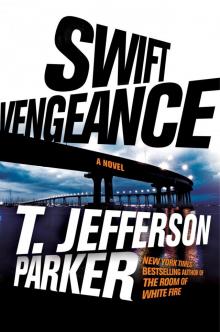 Swift Vengeance
Swift Vengeance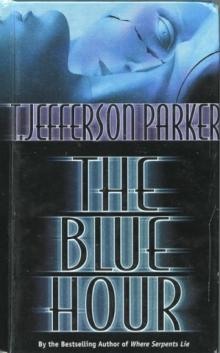 THE BLUE HOUR
THE BLUE HOUR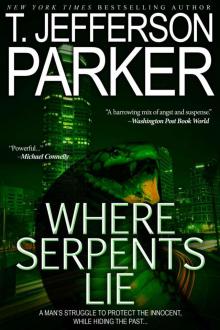 Where Serpents Lie (Revised March 2013)
Where Serpents Lie (Revised March 2013)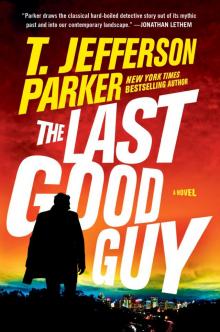 The Last Good Guy
The Last Good Guy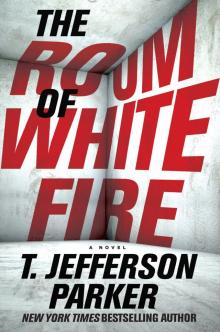 The Room of White Fire
The Room of White Fire Then She Vanished
Then She Vanished The Border Lords
The Border Lords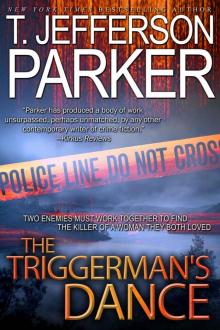 The Triggerman's Dance
The Triggerman's Dance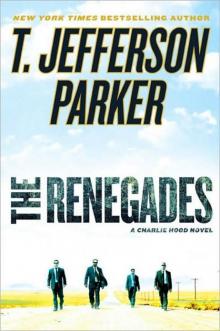 The Renegades
The Renegades Silent Joe
Silent Joe Iron River
Iron River Red Light
Red Light The Jaguar ch-5
The Jaguar ch-5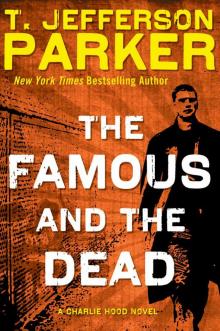 The Famous and the Dead ch-6
The Famous and the Dead ch-6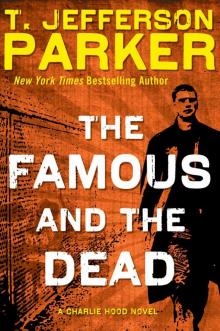 The Famous and the Dead
The Famous and the Dead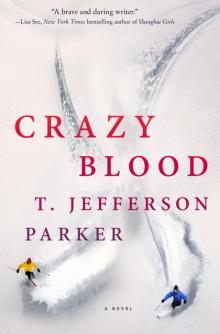 Crazy Blood
Crazy Blood Black Water
Black Water The Renegades: A Charlie Hood Novel
The Renegades: A Charlie Hood Novel Full Measure: A Novel
Full Measure: A Novel The border Lords ch-4
The border Lords ch-4 California Girl
California Girl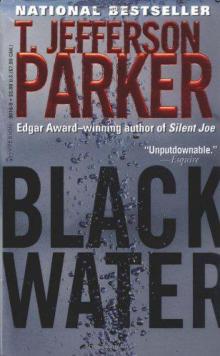 Black Water mr-3
Black Water mr-3 Little Saigon
Little Saigon L. A. Outlaws
L. A. Outlaws The Triggerman Dance
The Triggerman Dance Amazonia
Amazonia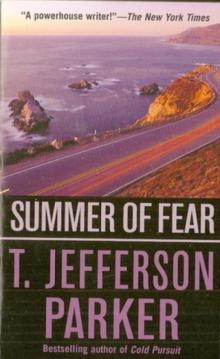 SUMMER of FEAR
SUMMER of FEAR Laguna Heat
Laguna Heat The Renegades ch-2
The Renegades ch-2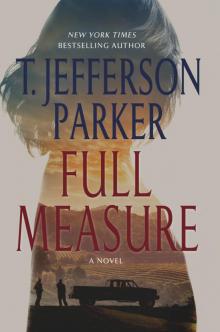 Full Measure
Full Measure